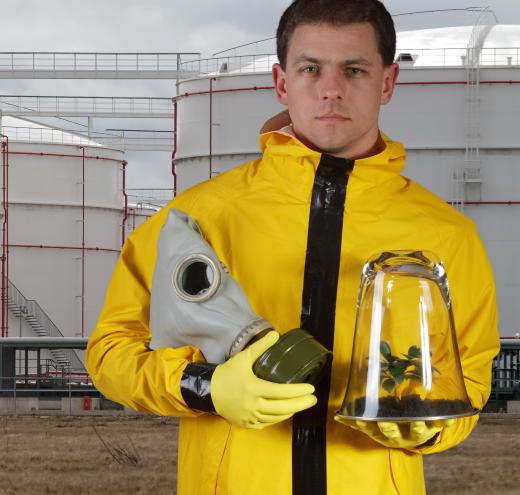What is Ruthenium?
 Mary McMahon
Mary McMahon
Ruthenium is a metallic chemical element that is fairly rare in the Earth's crust. It has a number of applications, most of which take advantage of its corrosion-resistance and hardness, in products such as metal alloys. Most people do not interact with this metal directly, although some luxury goods like platinum rings and fancy fountain pens include small amounts of it. It is moderately costly in pure form, and most of the world's supply is produced from mines in Russia and South America.
In appearance, ruthenium is a dull silver-gray element that tends to be very brittle and extremely hard. It has four allotropic forms, which means that it has four different crystalline structures in its pure form, depending on various conditions like exposure to heat, pressure, and air. When exposed to air and high temperatures, the pure element will oxidize rapidly. The metal is also highly resistant to acids, and it forms a number of compounds with other materials. On the periodic table of elements, ruthenium is labeled with the symbol Ru, and it has an atomic number of 44.

Several people lay claim to the discovery of ruthenium. The credit is generally given to a Russian chemist, Karl Klaus, who successfully isolated it from impure platinum ores. He named the element after the Latin word Ruthenia, which was used to describe Rus, an early form of the Russian empire that stretched across parts of Eastern Europe and modern-day Russia. Since Klaus was from Eastern Europe, he wanted to celebrate his homeland in his name for his successful discovery.

Alloys of metals like platinum and palladium frequently feature ruthenium for strength and durability. The metal is also used to make wear-resistant moving parts for various consumer goods, and it appears in some electronics. In nature, this element is usually associated with platinum, and it is unusual to find it in a pure form. Some purification systems also use ruthenium components, and medical researchers have explored the use of compounds that include it in cancer treatment.

Studies on this metal suggests that it may be carcinogenic. It also bioaccumulates, meaning that it builds up in a person's system since the body has no way to process it. The pure element will also stain the skin if handled directly. Certain compounds and oxides are toxic, and they should be carefully handled to avoid exposure.
AS FEATURED ON:
AS FEATURED ON:













Discussion Comments
Yes, it is very, very toxic!
@prizmordial: Danger! Keep your hands off it. As explained above, it is toxic, may be a carcinogen and your body cannot process it.
I am trying to clean a ruthenium surface. Does anybody know of an aqueous cleaning process? What type of drying is recommended.
Post your comments